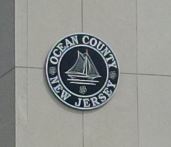 Ocean County’s Comprehensive Hazards Mitigation Plan will be the topic of two public meetings scheduled for the week of Oct. 28.
Ocean County’s Comprehensive Hazards Mitigation Plan will be the topic of two public meetings scheduled for the week of Oct. 28.
The meetings are scheduled for 6 p.m., Monday, Oct. 28 at the Ocean County Southern Service Center, 179 South Main St., Manahawkin and 6 p.m., Wednesday, Oct. 30 in Mancini Hall at the main branch of the Ocean County Library, 101 Washington St., Toms River.
Each meeting will start with a brief presentation and will include time for questions and comments on the plan.
The Ocean County Office of Emergency Management has developed the plan to address a variety of potential hazards that can affect the county’s citizens, facilities and the economy.
“It’s very important to get public participation as we continue in this process of developing our Multi-Jurisdictional All Hazards Mitigation Plan,” said Acting Sheriff William Sommeling, who serves as the county’s Emergency Management Coordinator. “This plan not only addresses potential hazards but will identify projects that can reduce damages from natural, man-made and technological hazards.”
Sommeling noted the county had solicited public input on the plan during initial meetings held in May.
He said it was important to note that the meetings were to gather input for the county’s plan and are separate from issues directly associated with Superstorm Sandy recovery.
“The Ocean County Multi-Jurisdictional All Hazards Mitigation Plan will serve as the blueprint for reducing property damage and saving lives from the effects of future natural and human-made disasters,” Sommeling said. “And, while the steps we took before, during and after Sandy will no doubt be part of the input this plan looks at other hazards that can potentially affect Ocean County including forest fires, winter storms, extreme temperatures, and man-made hazards.”
In addition, Sommeling said the creation of this plan will allow the County and its participating municipalities to be eligible for future mitigation funding from the Federal Emergency Management Administration.
The study focused on existing and future buildings, infrastructure and critical facilities that might be impacted, as well as people and economic resources. Critical facilities include shelters and hospitals; infrastructure includes power-generation facilities, water utilities, roadways, and communication systems.
